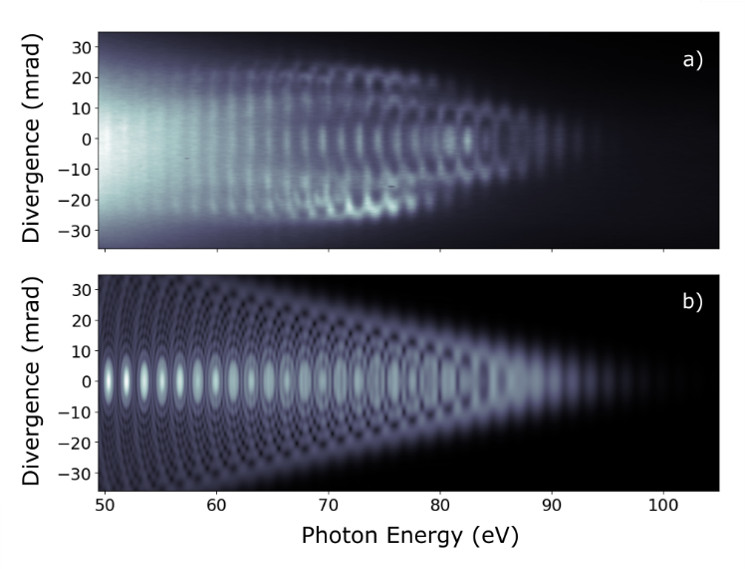HHG requires a high peak electric field at focus. In addition, short durations favor high cutoff energies. With these requirements, the dominant laser technology has been based, over the past 20 years, on Ti:Sapphire crystals inserted in a Chirped Pulse Amplification scheme.
They can reach high average powers (tens of watts), but their repetition rate remains limited to 10 kHz maximum, most often 0.1-5 kHz. Recently, a new technology able to fullfill these requirements emerged. It is based on Ytterbium Doped Fiber Lasers, and works at much higher repetition rates (beyond 100 kHz).
It may be extremely advantageous for a great wealth of applications, including coincidence spectroscopy (see XUV Spectroscopy.). Through a joint BPI funded project coordinated by Fastlite, and in particular with the group of Marc Hanna, at LCF (Institut d’Optique Graduate School, Palaiseau), we could test HHG with such a laser.
The experiment was carried out at LCF. The Yb-doped laser beam was first temporally compressed in a series of non linear stages, yielding a 15 to 50 fs pulse that was driving a specially designed high density HHG setup. The obtained HHG spectra were remarkably intense and stable.
Using the fiber laser to seed an Optical Parametric Amplifier (OPA), we could also investigate HHG at high repetition rate and long wavelength (1500 nm). We could connect the appearance of very strong spatial and spectral modulations in the spectrum to the high sensitivity of the dipole phase during HHG to the laser intensity at this wavelength (see figure).
This strong dependence make the use of such long wavelengths difficult to handle. However, the exceptionnal stability of the laser make it very attractive for future applications. In 2024, ATTOLab was equipped with such high repetition rate lasers.



